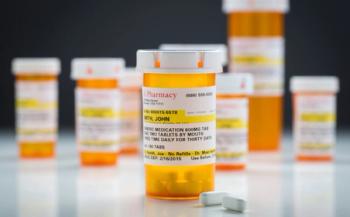
- Pharmaceutical Executive-10-01-2020
- Volume 40
- Issue 10
Smoothing Access Path
The role of advanced data technologies in reducing hurdles.
As technology has evolved, patient hub services have been able to create more advantages for their consumers. Despite this, there are still barriers that patients need to get through to gain access to a medical product. One of the companies looking to provide a clearer path for patients is Cardinal Health through its SonexusTM Access and Patient Support Hub.
In the following interview, Rebecca Cotton, executive director of data analytics and intelligence,
PE: What are some of the things that biopharmaceutical organizations can do better through the use of patient support hub technology?
Cotton: Specifically, when we look at removing the barriers, we can look at where we’ve brought technology to bear, such as through electronic benefit verification (eBV) and electronic prior authorization (ePA). We’re able to automate processing that in the past was done by a person picking up a phone, reaching another person that may or may not be there; they may have to call back multiple times. These processes and approval timelines used to be days and now they can be less than a minute, and this significantly reduces the time to therapy for patients.
The next piece is putting the power of the hub into the offices’ hands. With our Connect Point 360 portal, we’re able to do many of the reimbursement tasks that were previously done by phone or fax in the hub and move them to an online setting. This reduces not only the benefit verification, but potentially the prior authorization and all of the timelines to get that patient on therapy.
Thirdly, with some of the more advanced technologies like AI or natural language processing, we are able to use those tools to have a deep understanding of our patients and what hurdles they are facing on their journey. Natural language processing is where we record and transcribe calls from the patient so we know exactly what they’re saying, what’s top-of-mind; and we can search on those barriers and use that information to help manufacturers put programs in place that reduce those hurdles.
PE: What would you say are the current data and analytics challenges in the patient hub services space?
Cotton: The ability to aggregate hub data is challenging. Making sure the data is usable, since we’re pulling data from many different sources—not only from our own internal data but from pharmacy, payers, healthcare providers—and there’s little consistency in how it’s structured. If it isn’t structured correctly, then it takes longer to answer questions or you could get misleading information, which can then impact the decisions that are made from that information.
PE: What are the steps companies can take to ensure that the data they have is structured and curated properly?
Cotton:You have to focus on the patient journey. You need to decide what the beginning and the end of the patient journey are, and then make decisions about key points within that journey. If you structure it that way, then it becomes much easier to manage. When looking at any hub data, you may find data signals in multiple places for a specific event because a patient may have come in [through] multiple channels into the hub; but which one is correct? If straight, raw data is used, there will be challenges in making it more useful.
PE: How do technology and digital tools continue to bring new advantages to the customer?
Cotton:We are using AI and natural language processing much more; every call and interaction is recorded, and we can quickly search this information to find out what barriers patients are encountering. So, whereas we would have to rely in the past on our call-agents potentially knowing or seeing a pattern, we now have automated searches that, within minutes, can say, “We’re starting to see a signal in this particular area.” We definitely used that more when it came to COVID.
PE: Can you elaborate on the impact of the pandemic for Sonexus?
Cotton: In talking about AI, we were able to quickly go in and listen to the calls and set up searches so that we could understand what hurdles our patients were experiencing and any additional challenges that they were having because of COVID.
Then, we took this back to our customers and they were able to make fast decisions. Some of them made the decision to relax the income or lack of health insurance criteria for the patient assistance programs. Some [patients], if they were basing it off of last year’s income, for instance, they may just need proof of job loss. But our customers were able to relax their criteria to help a broader range of patients in the middle of this pandemic. The access and patient support services space is uniquely positioned to be hearing what the patients are saying and are able to make suggestions back to our customers on how they can best support the most patients.
PE: What do you think the future holds for the industry in this area?
Cotton: I believe [the industry] will be turned on its head. Most programs still have a person moving a patient through the system; they are sometimes pulling interactive tools like doing eBV, ePA, or using some AI to advance a patient through the system, but for the most part, a person is still advancing that patient through the system.
In the future, the system should be moving the patient through and calling on a person when an automated solution can’t do it. As we’re more reliant on texting as a source of information from a healthcare provider or a hub to a patient, these channels are more useful and sometimes preferred by patients. They can be completely automated; there isn’t the need for a person to pick up a phone and make a call; a system can automatically send a text at different points in the process.
So, it’s turning the system on its head where the machine is pushing the patient through the process, overcoming the various hurdles, and people get involved when more personalized support is needed to get over the hurdles.
Andy Studna is an Assistant Editor for Pharm Exec. He can be reached at
Articles in this issue
about 5 years ago
The SPAC Makes a Comeback!about 5 years ago
Leadership and Industry Imageabout 5 years ago
The Interplay Between COVID-19 Pandemic and NCD Epidemicabout 5 years ago
FDA Struggles to Retain Credibilityabout 5 years ago
Critical Connection: Patient Services and Product Launchabout 5 years ago
Mastering the Transition From Academia to Industryabout 5 years ago
The COVID Boost to AI in Global Healthabout 5 years ago
Pharmaceutical Executive, October 2020 Issue (PDF)about 5 years ago
Speed and SensitivityNewsletter
Lead with insight with the Pharmaceutical Executive newsletter, featuring strategic analysis, leadership trends, and market intelligence for biopharma decision-makers.





